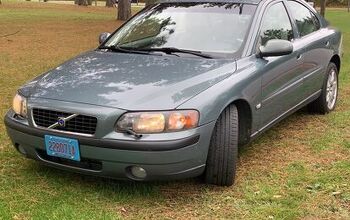Australia: Lawmakers Reject Call for Speed Camera Review
A November study by the University of Adelaide recommended that a commission be established to review the placement and use of speed cameras in South Australia. Last month, the state parliament rejected any suggestion that policies relating to automated ticketing could be questioned.
As part of a parliamentary internship program, a research report reviewed existing research and applied the findings to the road safety situation in South Australia. The results were provided to Ivan Venning, a Liberal Party member of House of Assembly, who attempted on May 19 to win approval for a select committee to examine the use and effectiveness of photo enforcement. During debate, Venning pointed out several other states were currently conducting reviews of their own.
“People are fed up with being used as cash cows by the government when the accuracy of the use of speed lasers is called into question, and it compounds public frustration and anger,” Venning said. “The New South Wales O’Farrell government is, today, undertaking an audit on speed camera use and effectiveness, and I commend it for that. The Victorian government is also undertaking an examination of the issue; Ted Baillieu has appointed a camera ombudsman. I think it is high time for a full scale review to be undertaken here.”
Labor Party member of parliament Tony Piccolo succeeded in a 23-18 vote to replace Venning’s motion with a statement that the parliament “has confidence in and supports the efforts of the Commissioner of Police in ensuring the effectiveness of speed cameras.”
The South Australian report noted that from 1990 to 2002, South Australia issued 2.4 million photo tickets and collected A$283 million in revenue, but road deaths in 2000 were higher than they were in 1992. In terms of camera placement, the most lucrative photo ticketing locations were not on the list of most dangerous roads — with the exception of sites in Adelaide and Morphett Vale.
“Thirty-seven percent of cameras in the study were placed directly inside a rural town on a rural street, even though the data above demonstrates that only 4.2 percent of accidents occur in these areas,” the report noted.
The study recommended giving local police responsibility for positioning cameras instead of the current system where locations are selected by the state police. It also recommended increase transparency and consideration of alternatives to cameras.
“The idea that speed cameras reduce speeds, accidents and fatalities is often too simplified,” the report concluded. “As studies have shown, there are a number of other factors that can affect the use of speed cameras and a number of road safety measures that can help reduce the road toll… by simply focusing on speed and speed cameras to reduce the road toll, policymakers are ignoring other factors which contribute to the complex causes of accidents.”
A copy of the report is available in a 1mb PDF file at the source link below.
Speed Cameras: Life Savers or Revenue Raisers? (University of Adelaide, 11/8/2010)
[Courtesy: Thenewspaper.com]
More by Edward Niedermeyer
Latest Car Reviews
Read moreLatest Product Reviews
Read moreRecent Comments
- ToolGuy TG likes price reductions.
- ToolGuy I could go for a Mustang with a Subaru powertrain. (Maybe some additional ground clearance.)
- ToolGuy Does Tim Healey care about TTAC? 😉
- ToolGuy I am slashing my food budget by 1%.
- ToolGuy TG grows skeptical about his government protecting him from bad decisions.

































Comments
Join the conversation
Revenue raisers
I see we're not the only country with the best politicians money can buy...